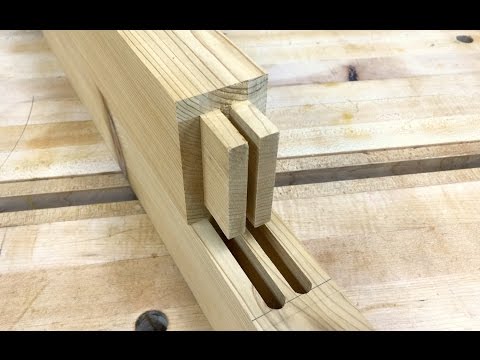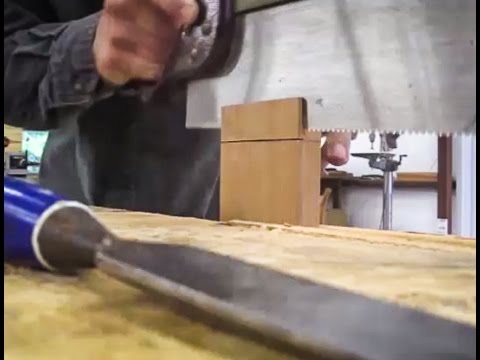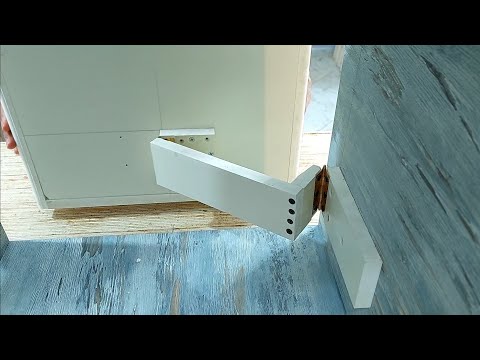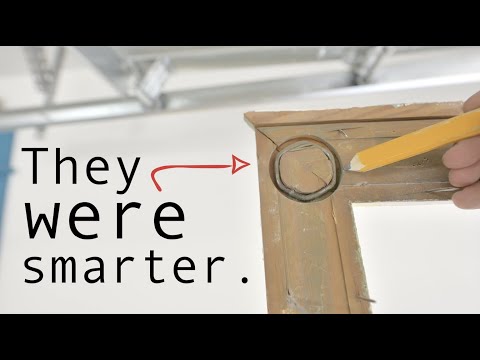It looks like Mattias Wandel needs some shelving for his shop. If you know anything about Mattias, you know he likes to make stuff from wood. He sets out to discover which shelf bracket is more substantial, a double-tenon mortise-and-tenon bracket or one held together with a couple of long wood screws?
Mattias made some shop-grade shelf brackets out of off-the-shelf 2x4s to test joint strength. First, he tested a double mortise and tenon joint against two four-inch screws angled downward.
He clamps the shelf bracket to a pole in his garage and stands on the bracket. Of course, it is strong enough, so he extends the bracket length by clamping a 2x4 to it. Next, he steps out further from the pole to see when the bracket will fail.
Double-tenon shelf bracket
A double mortise and tenon joint is cut into the framing lumber, and the joint is assembled.
- Weight: 70 kg
- Last held: 82 cm
- Broke at 87 cm
The bracket appears to have failed at the joint: the tenons pulled out of the mortise. Upon further inspection, the tenons broke along the bottom, allowing the top to pull out.
The wood grain on the tenons was not ideal for mortise and tenon joinery—it was a utility-grade 2x4, not white oak. Mattias suspects with a better grain choice; the tenon could have held twice as much weight.
Screwed-together shelf bracket
Four-inch screws with washers on the heads hold the two pieces of wood together.
- Weight: 70 kg
- Last held: 70 cm
- Broke at 75 cm
The screw-joint shelf bracket easily held the necessary weight at the end of the one-foot bracket, only failing when he stepped out on the extended portion. The failure was as he suspected it would be, in pulling the screws through the wood. He used washers to slow that movement, but it did not stop the movement.
The wood also broke away from the screws, so again, utility-grade lumber is sub-optimal for structural brackets.
But wait, there's pocket holes!
He cuts down the double-tenon shelf bracket to make a pocket hole joint. [5:45: the impact driver slips, and we get an "Ow, shit."]
Shelf bracket with pocket hole joinery
Mattias screws two pocket hole screws into each side of the bracket (muttering that he hates pocket holes) and sets the bracket up on the testing pole.
- Weight: 70 kg
- Last held: 55 cm
- Broke at 60 cm
The pocket hole screws did not break or fail; the wood between them failed.
It appears that the pocket hole screws were too close to each other, meaning that they could only 'grab' a small wedge of wood, which pulled out. Mattias hypothesizes that if he had not held the pocket hole jig back from the edge of the 2x4, it would have allowed the acres to grab a bigger wedge, and therefore performed better.
BUT, for a pocket-hole hater, Mattias is impressed with the strength: more than half as strong as a double-tenon joint.
"...but I still don't like pocket holes."
Bottom line: Screw it and get a bigger washer.











